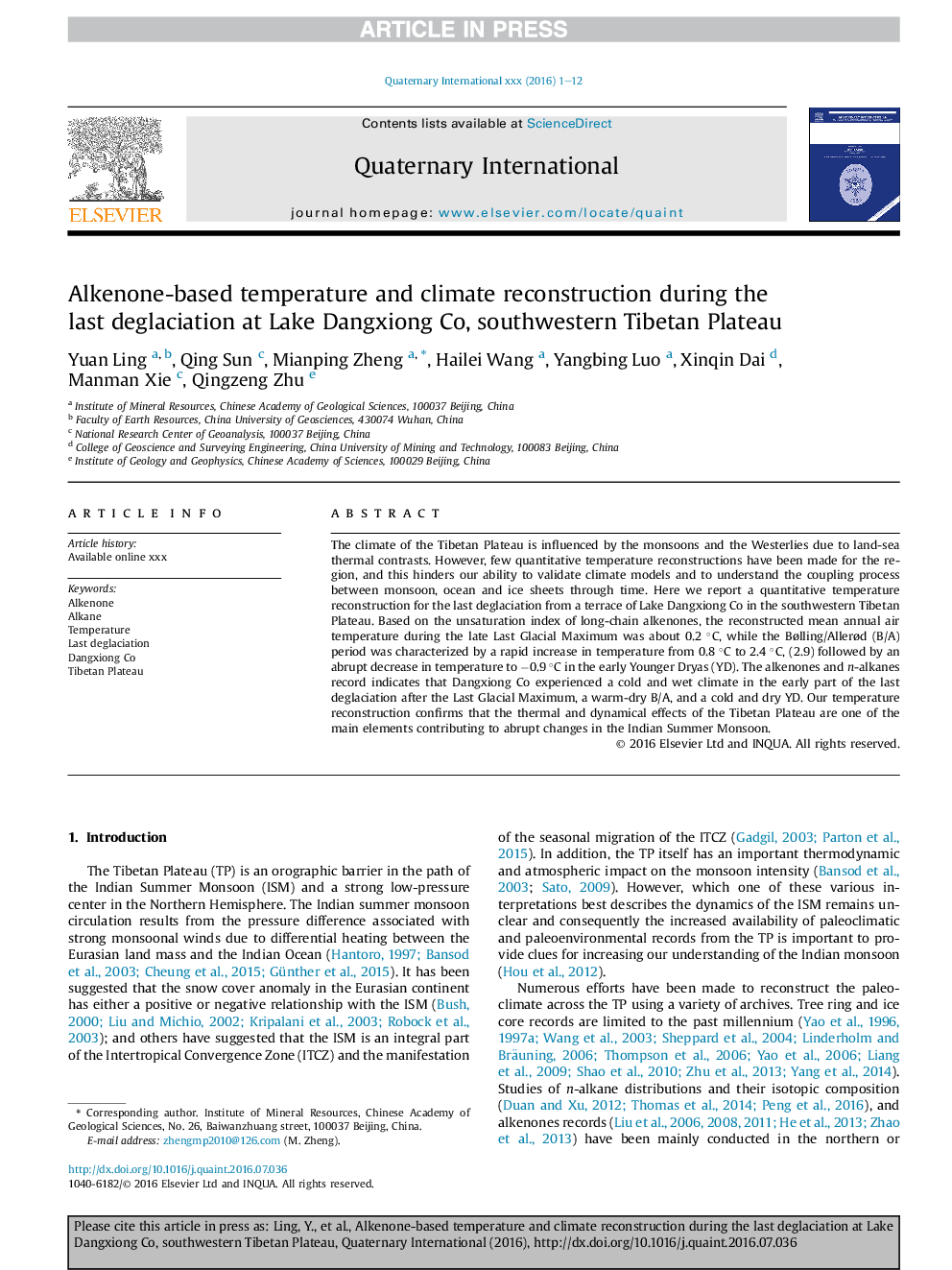| Article ID | Journal | Published Year | Pages | File Type |
|---|---|---|---|---|
| 5113127 | Quaternary International | 2017 | 12 Pages |
Abstract
The climate of the Tibetan Plateau is influenced by the monsoons and the Westerlies due to land-sea thermal contrasts. However, few quantitative temperature reconstructions have been made for the region, and this hinders our ability to validate climate models and to understand the coupling process between monsoon, ocean and ice sheets through time. Here we report a quantitative temperature reconstruction for the last deglaciation from a terrace of Lake Dangxiong Co in the southwestern Tibetan Plateau. Based on the unsaturation index of long-chain alkenones, the reconstructed mean annual air temperature during the late Last Glacial Maximum was about 0.2 °C, while the Bølling/Allerød (B/A) period was characterized by a rapid increase in temperature from 0.8 °C to 2.4 °C, (2.9) followed by an abrupt decrease in temperature to â0.9 °C in the early Younger Dryas (YD). The alkenones and n-alkanes record indicates that Dangxiong Co experienced a cold and wet climate in the early part of the last deglaciation after the Last Glacial Maximum, a warm-dry B/A, and a cold and dry YD. Our temperature reconstruction confirms that the thermal and dynamical effects of the Tibetan Plateau are one of the main elements contributing to abrupt changes in the Indian Summer Monsoon.
Related Topics
Physical Sciences and Engineering
Earth and Planetary Sciences
Geology
Authors
Yuan Ling, Qing Sun, Mianping Zheng, Hailei Wang, Yangbing Luo, Xinqin Dai, Manman Xie, Qingzeng Zhu,
